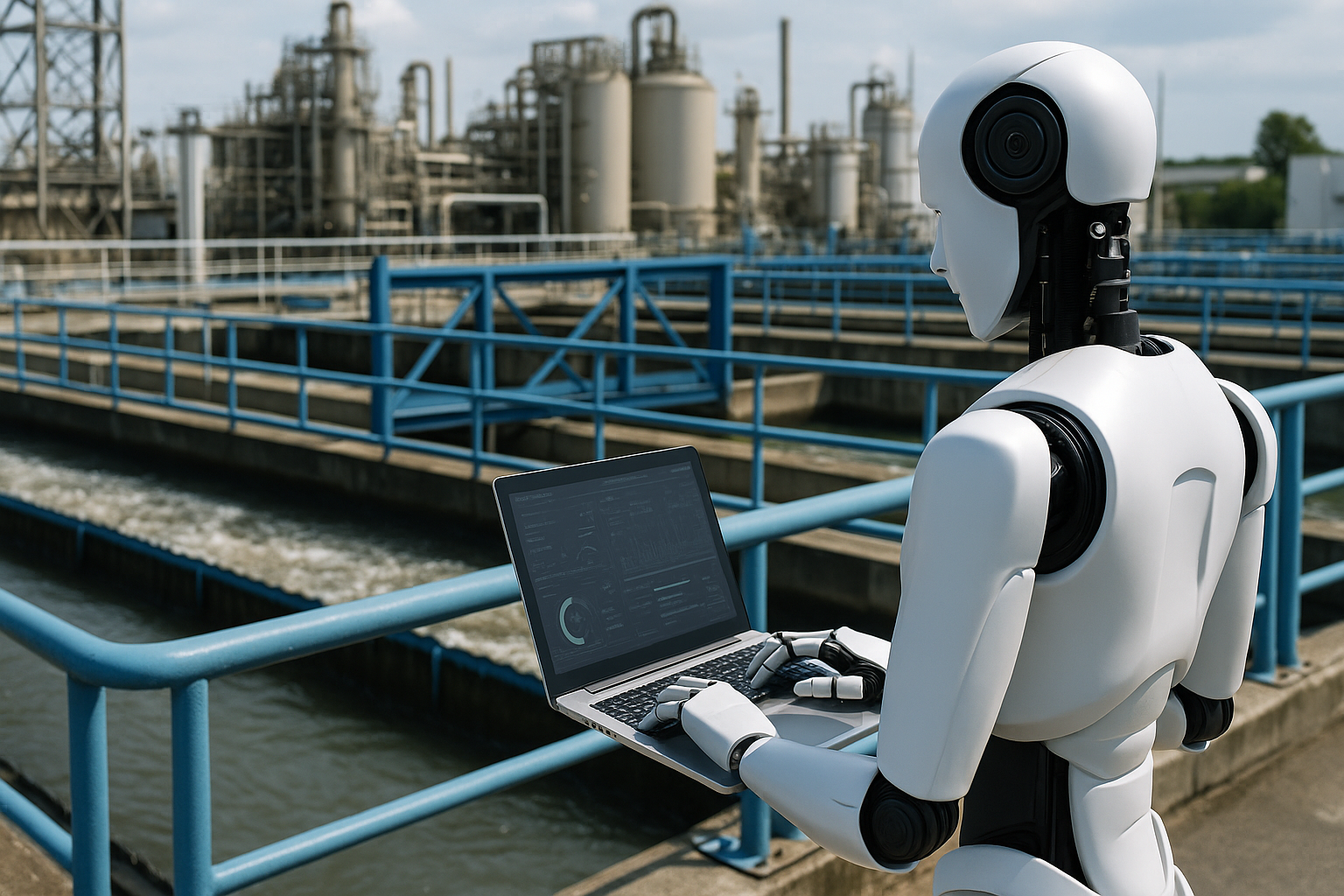AI drives sustainable wastewater solutions with digital twins and predictive models
Wastewater treatment is energy-intensive, with aeration and pumping among the largest cost drivers. The review details how AI is already making measurable impacts on efficiency through optimization algorithms that fine-tune operational parameters in real time.

A team of researchers has published a comprehensive review highlighting how artificial intelligence technologies are reshaping the way wastewater treatment plants operate and evolve.
Published in the journal Water, the study “An Overview of the Latest Developments and Potential Paths for Artificial Intelligence in Wastewater Treatment Systems,” examines the deployment of machine learning, deep learning, reinforcement learning, and digital twin technologies in critical areas such as water-quality monitoring, process optimization, fault detection, membrane fouling control, and resource recovery. The findings reveal both the progress made and the challenges that remain for large-scale adoption.
How is AI enhancing water-quality monitoring and prediction?
Monitoring water quality in real time has always been a key challenge for treatment plants, with conventional laboratory-based testing too slow to guide immediate decisions. The review shows how artificial intelligence has changed this landscape through the use of predictive algorithms and soft sensors.
Advanced neural networks, such as long short-term memory models, have been applied to predict chemical oxygen demand, ammonia nitrogen, and other key parameters with significantly lower error rates compared to traditional statistical methods. Transfer learning techniques have improved accuracy even when limited training data is available, while gradient-boosted decision trees have been used to model the behavior of pollutants such as per- and polyfluoroalkyl substances.
These tools make it possible for plants to anticipate fluctuations in water quality before they occur, enabling operators to adjust treatment processes in advance. The result is more consistent effluent quality, less chemical waste, and reduced risk of regulatory breaches. By embedding predictive capabilities into plant operations, AI is creating a more proactive and resilient water management system.
Can AI reduce energy use and optimize wastewater operations?
Wastewater treatment is energy-intensive, with aeration and pumping among the largest cost drivers. The review details how AI is already making measurable impacts on efficiency through optimization algorithms that fine-tune operational parameters in real time.
Artificial neural networks, combined with genetic algorithms, have been used to optimize aeration systems, reducing total energy consumption by close to seven percent in some studies. Deep reinforcement learning has delivered even more striking results, with experiments demonstrating that aeration energy use can be cut by one-third without compromising effluent quality. Hybrid approaches combining recurrent neural networks with clustering techniques have also shown potential for balancing treatment performance with cost savings.
Beyond energy efficiency, AI has been used to model and optimize chemical dosing, sludge management, and wastewater reuse strategies. Cloud-connected digital twins, virtual replicas of treatment plants, now allow operators to test different strategies in a simulated environment before applying them on-site. These plant-wide models integrate monitoring, decision-making, and execution into a single loop, creating the foundation for fully autonomous facilities.
How is AI addressing faults, membrane fouling and resource recovery?
Treatment plants face significant challenges from equipment malfunctions, sensor drift, and membrane fouling in advanced filtration systems. According to the study, artificial intelligence offers novel solutions for fault detection and predictive maintenance.
Techniques such as principal component analysis, independent component analysis, and auto-associative neural networks are being deployed to detect subtle changes in sensor signals that may indicate faults before they escalate. Transfer-learning Bayesian models have improved classification accuracy in anomaly detection, enabling faster response to unexpected events.
Membrane fouling, one of the costliest issues in wastewater treatment, is now being tackled through machine learning models that predict transmembrane pressure increases and flux decline. Random forest and extreme gradient boosting algorithms have helped rank the most significant drivers of fouling, while explainable AI methods provide insight into how operational changes can extend membrane lifespan. The review cites findings where AI-based prediction models extended membrane service life by nearly one-third and reduced maintenance costs by a quarter.
Besides safeguarding operations, AI is also enabling resource recovery from wastewater. Applications include optimizing nitrogen and phosphorus recovery, improving sludge-to-energy conversion, and supporting processes such as biogas and volatile fatty acid production. Machine learning has been applied to pyrolysis modeling, predicting reaction kinetics and yields with higher precision, while deep learning tools are being used to classify and quantify microplastics. These developments suggest that wastewater plants can evolve from disposal systems into hubs of circular economy innovation.
Limitations and future pathways
Despite the progress, the authors highlight that several barriers must be addressed before AI becomes standard practice across the industry. Data scarcity, heterogeneity, and sensor reliability issues limit model accuracy in real-world applications. Many models are trained on laboratory or pilot-scale data and struggle to generalize to full-scale treatment plants. The integration of AI systems with legacy plant infrastructure remains technically demanding, and a lack of standardized protocols makes it difficult to compare performance across sites.
To overcome these challenges, the study highlights several future directions: developing lightweight models that can run on edge devices for real-time control; building standardized data frameworks to ensure compatibility across facilities; and advancing plant-wide digital twin systems for holistic optimization. Greater emphasis on interpretability and uncertainty quantification will also be essential to build trust among operators and regulators.
- FIRST PUBLISHED IN:
- Devdiscourse










